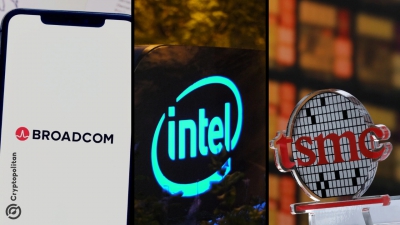On December 13, Ayar Labs, a Silicon Valley Optical I/O(OIO) chip design company, announced the completion of a US$155 million Series D financing led by Advent International and Light Street Capital, with a valuation of more than US$1 billion, officially joining the ranks of unicorns.
There are also many strategic investors participating in the new round of financing, including Nvidia, AMD, Intel, GlobalFoundries, VentureTech Alliance, which has a strategic partnership with TSMC, and American machine manufacturing giant 3M.
What kind of start-up is Ayar Labs that can attract the three chip giants Nvidia, AMD, and Intel at the same time? What does Optical I/O technology mean for the current AI era?
To understand why Ayar Labs is favored by the three giants, we must first understand the current AI era.
As the demand for artificial intelligence becomes more and more intense, its systems become more complex and larger, and the problem of reduced efficiency becomes more and more obvious. For example, the operating efficiency of one GPU is 80%, the operating efficiency of 64 GPUs may be 50%, and the operating efficiency of 256 GPUs may be only 30%.
Part of the reason for this is that under traditional electrical I/O technology, GPUs use electrons to transmit data through copper wires, which will limit transmission performance and reduce utilization. There are also problems such as high energy consumption and signal attenuation.
Ayar Labs, founded in 2015 and headquartered in San Jose, California, USA, focuses on accelerating the communication speed of data centers through optical I/O technology and breaking through data transmission bottlenecks.
To put it bluntly, Optical I/O uses photons instead of electrons to transmit data, and can provide bandwidth of trillions of bits per second, making it easy to transmit large amounts of data. In addition, unlike electrical signals, optical signals can be transmitted over long distances without significant loss of bandwidth or signal integrity, and their power consumption is relatively low.
After calculation, under ideal conditions, the end-to-end power consumption of optical chips is only 10% of that of electronic chips, and the delay is only 1% of that. However, under the same conditions, the computing power can reach more than 100 times that of electronic chips.
It can be said that Optical I/O is one of the key technologies for the construction of next-generation AI infrastructure, and Ayar Labs is currently at the forefront of the industry in this technology.
Ayar Labs is currently developing two products: TeraPHY Optical I/O chiplets and SuperNova multi-port, multi-wavelength light sources.
TeraPHY optical I/O chiplets are small enough to be seamlessly integrated into advanced chip packages while supporting up to 4 Tbps of bidirectional bandwidth with 5 ns latency per chiplet. The power consumption of the chiplet is about 10W, or 5 pJ per byte, which is relatively low considering the speed of TeraPHY.

The SuperNova remote light source is used to work seamlessly with TeraPHY, which can provide 16 wavelengths of light to support 16 ports and provide bidirectional power supply for 256 data channels or 16 Tbps. Compared with traditional interconnects such as pluggable optics and electrical SerDes, SuperNova remote light source bandwidth is increased by 5-10 times, latency is reduced by 10 times, and power efficiency is increased by 4-8 times.
The reason why Nvidia, AMD, and Intel invested in Ayar Labs was because of its technology and products and the commercialization potential it brings.
Take NVIDIA, for example. It has accelerated AI by a million times in the past decade. In the future, it will need efficient data transmission technology to support the growing demand for computing power. This requires new technologies such as optical I/O to support the bandwidth, power and scale requirements of its future AI/ML workloads and system architectures.
By investing in Ayar Labs, NVIDIA can gain in-depth understanding and priority access to products and technologies of Ayar Labs, thereby further optimizing its own AI training platform, improving performance and reducing costs. In addition, technology of Ayar Labs is highly consistent with existing technology routes of NVIDIA, and both parties can be on the same path.
For competitors of Nvidia, Intel and AMD, it is more necessary to use technology of Ayar Labs to improve the performance of their own products to boost performance. Especially for Intel, whose performance has lagged significantly behind Nvidia and AMD.

According to Bloomberg, Intel has partnered with Ayar Labs to integrate its technology into large-scale chip production.
Although many companies in the industry are already laying out the Optical I/O business, Ayar Labs is in a leading position in scalable manufacturing capabilities and thus has visible commercialization potential. This is one of the reasons why it attracts the three giants.
For example, TeraPHY can help customers improve the computing efficiency and performance of AI infrastructure, while also reducing costs because power consumption is lower than traditional interconnects. In other words, it can not only help customers improve the performance of AI products, but also increase the possibility of profitability by reducing costs.
It is reported that Ayar Labs has begun shipping approximately 15,000 devices to some customers, and plans to achieve mass production by mid-2026, with annual shipments reaching more than 100 million units by 2028 and beyond.
Although Ayar Labs has promising prospects, it still faces challenges from many opponents.
In September this year, Swiss Optical I/O start-up Lightium AG completed a US$7 million seed round of financing. In October, Lightmatter, an American photonic computing and network startup, completed a $400 million Series D financing, bringing the total financing amount to $850 million and a valuation of more than $4.4 billion. Also in October, another American photonic technology startup, Xscape Photonics, completed a $44 million in Series A financing, bringing the total financing amount to $57 million.
Lightmatter, founded in 2017, can be said to be one of the most powerful competitors of Ayar Labs. Compared with the previous round of financing, valuation of Lightmatter has directly increased by approximately 3.7 times after the D round of financing, making it one of the most highly valued optical chip startups.

Lightmatter is more sexy than Ayar Labs.
'Replacing electricity with light' is becoming a computing power revolution in the chip industry, and the market size is also very large and growing rapidly. Technavio predicts that from 2023 to 2028, the global optical interconnection market will grow by US$16.8 billion, with an annual compound average growth rate (CAGR) of 20.62%.
In this huge piece of cake, in addition to dazzling start-ups such as Ayar Labs and Lightmatter, there are also established companies such as Microsoft and Amazon. Some media even stated that Nvidia, which has been investing in various fields, is also developing Optical I/O technology, which shows that this field will form huge industrial opportunities in the future.
















